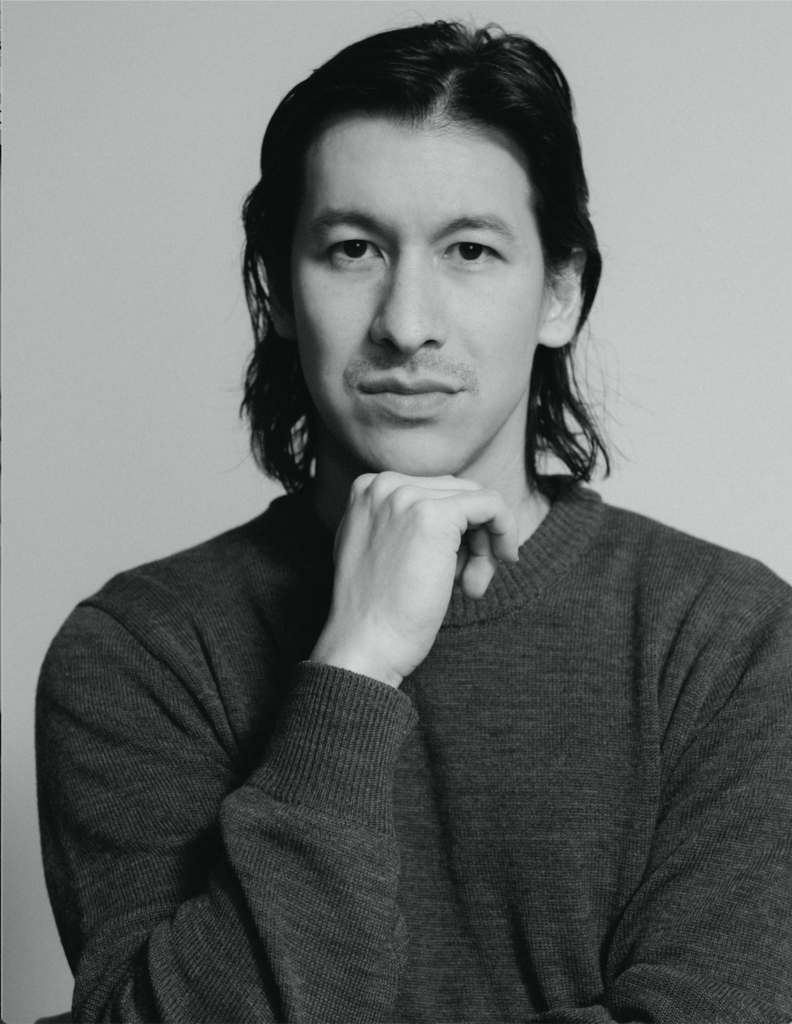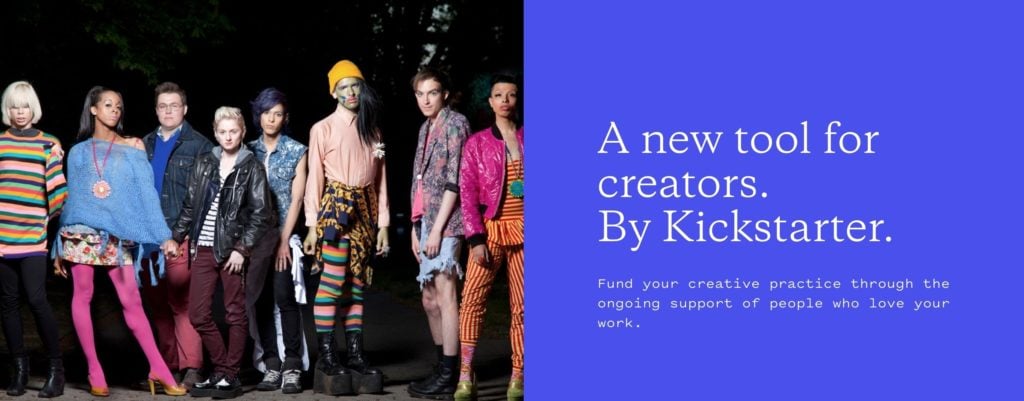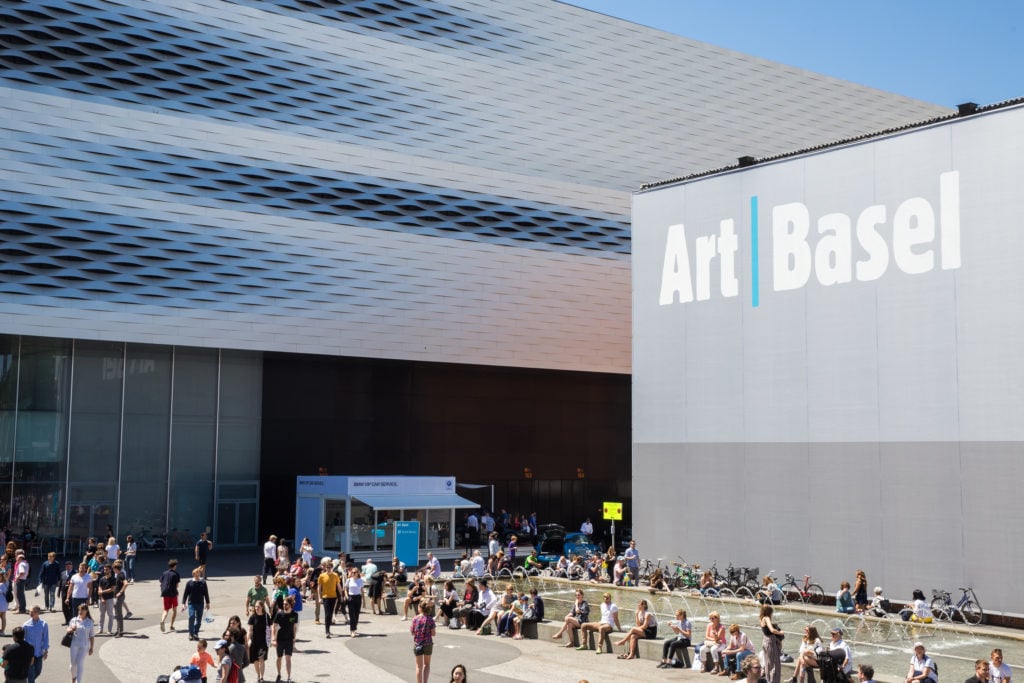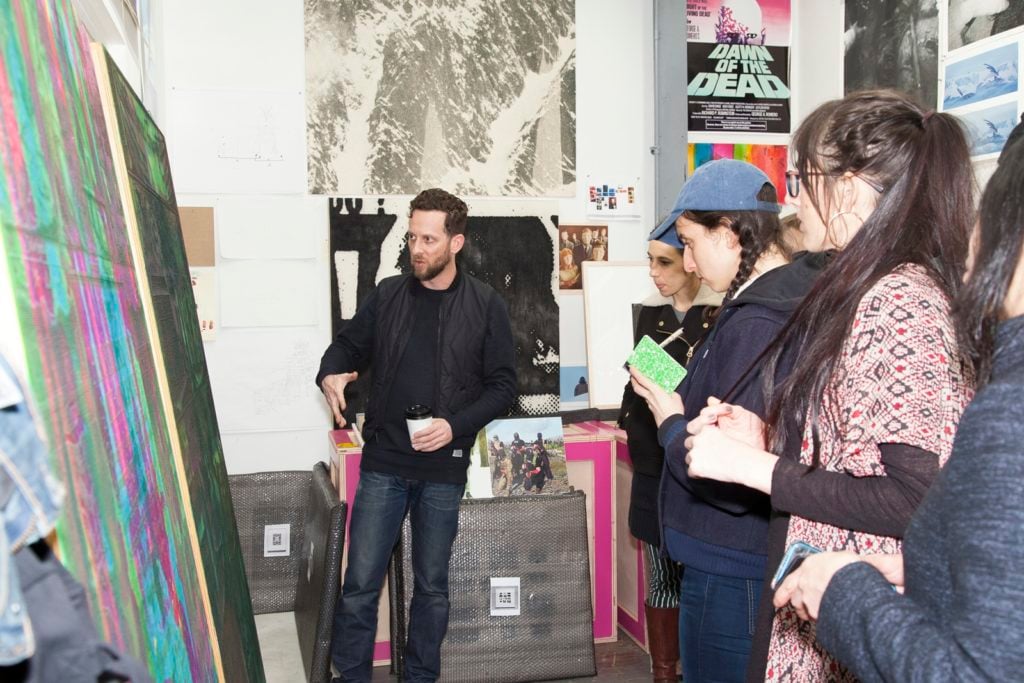People
Is Kickstarter All One Big Social-Practice Artwork? Founder Perry Chen on His Company’s Missteps—and Where It Goes From Here
We spoke to the Kickstarter creator about what the distributed art school of the future might look like.

We spoke to the Kickstarter creator about what the distributed art school of the future might look like.

Andrew Goldstein

As it rounds the bend of its first decade, Kickstarter is an undeniable success story. Hailed after its launch as one of TIME magazine’s “50 best inventions” of the year for taking a novel approach to “low-risk, grassroots fundraising,” the company became profitable in mid-2010 and has since raised a staggering $4.3 billion for projects on its platform, successfully funding 162,360 campaigns. (The stats can be found, continually updated, on the site—a pretty effective brag.)
These projects range from the outlandishly futuristic, like a drone you can control with your mind, to the ambitiously artistic. The Kickstarter Art section, run by the former gallerist Patton Hindle, has funneled $99 million to fine-art undertakings, including projects by seven artists in this year’s Whitney Biennial: Darius Clark Monroe, Blitz Bazawule, Brendan Fernandes, Paper Tiger TV, Paul Mpagi Sepuya, Garrett Bradley, and Sam Green. Recently, it launched its first open-call art project with the nonprofit Creative Time, with a society-critiquing escape room by Risa Puno emerging as the winner.
At the same time, the platform—which Kickstarter creator Perry Chen originally toyed with calling “Critical Mass”—has had its share of misfires as well. Drip, a venture launched to great fanfare in 2017 as a way to send certain worthy artists a steady stream of revenue, failed to gain traction and was spun off to another company last year. A venture spearheaded by Art Basel to re-route some cash from the fair’s moneyed clientele toward nonprofits quietly fizzled out as well. As is often the case with experiments, these failures generated fascinating laboratory results—providing insights into the human motivations for philanthropy.
In the second half of a conversation about Kickstarter’s first 10 years, artnet News’s Andrew Goldstein spoke to Chen—who last month stepped down as CEO, but remains chairman—about the lessons he’s learned and his vision for where the company should venture next.

Michael Sharkey on Drip, courtesy of Kickstarter.
It seems like you launched Drip in 2017 to support to support quieter projects that might not have an easy time drawing funding. Drip allowed people to sponsor an invitation-only list of some 100 artists directly in a subscription format of recurring “drips” of money rather than backing specific projects. Last fall, Kickstarter stopped developing Drip, spinning it off to another company, XOXO. What went wrong with Drip at Kickstarter?
For the last 10 years, what we do has revolved around project-based funding. And for the last 50 years, subscriptions have generally been applied to media, like the New York Times, or a podcast. Then there are memberships, like for non-profits, where you sign up and agree to donate a certain amount every year, or every quarter.
But giving in a one-off way and in a recurring way are two very, very different things. When it comes to artists who do project-based work that’s less frequent, irregular, and can’t always be distributed to a large audience, a subscription model has not yet been proven, and may not be possible.
Why? It’s just so much easier for us to say, “I don’t really know you, but this is cool—here’s $10.” Think about how high the bar would be have to be for you to say, “I don’t really know you, but this is cool, so I’m going to subscribe to you on a monthly basis.”
The whole innovation with Kickstarter was that, before, the bar for investing in culture was so high: “Is your idea going to make money?” Well, then 99 percent of shit won’t qualify. Even if I’m getting a grant or getting a patron to donate, that’s a high bar, too. Kickstarter lowered the bar—it’s a lower amount of money and you only commit to one project.
Attempting to try to break through on subscriptions, which is what Drip was about, was a noble effort. But what we found was that this is a really, really, really hard problem. And we’re not positioned right now to give this problem the energy and commitment it requires. That’s why we ultimately partnered with the people who run this festival called XOXO, which is at the intersection of creativity and the Internet—if anybody can do this, they can.
I wonder what would happen if artists decided to adapt their way of working to those things that you say would enable a subscription model: regularly recurring, widely distributable content.
It depends on what the individual is willing to sacrifice to do their work in the way they want. Even when people do Kickstarter projects, one of the things I always want them to understand is that giving people weekly or monthly updates about your project is a really strong way to build your connection with the audience. But if they think, “That’s just not me”? Then don’t.
That’s why the important conversation is not just about how we monetize things, but also how we stop invalidating it when an artist works another job on the side. It’s not superior if you’re an artist and that’s all you do. If you’re like, “I love teaching these kids, it fuels my art,” and it allows you to keep exploring new territory without financial pressure, then that may be exactly where you need to be.
That’s why I feel people who work in art need critical support systems of other people who work in art. Because a lot of the time people lose sight of the work, and it becomes about the artist. It’s only natural, since we’re human animals and we tend to focus on the social. But that’s why Kickstarter’s mission is to help creative projects come to life. It’s not to help artists. The result may look the same to some people, but we help artists make work. We don’t just help them because they’re artists.
When I’m with people who work in art institutions, sometimes it turns into, “Artists deserve blank.” And I think that’s where we lose the plot. Because artists don’t deserve anything. If you say artists deserve blank, then you have to say teachers deserve blank. Everybody who is not hurting society does. And no artist I know ever said, “I deserve X.” It’s more, like, “I just want to make this fucking shit.”

Art Basel in Basel, Switzerland. Photo courtesy of Art Basel.
I think one of the most valuable services that Kickstarter has provided in its 10-year history is that it has been a laboratory for different experiments. Kickstarter’s core model has clearly succeeded, but other things, like Drip, have not in ways that tell us fascinating things about the nature of patronage. One of the most fascinating experiments was when you partnered with Art Basel, the preeminent art-fair company that has vast reach through its social-media apparatus and its relationships with wealthy collectors worldwide, in an effort to tap into this high-value audience to support projects by nonprofit organizations. How did that work?
Art Basel would bring us specific projects that galleries or nonprofits were doing with artists, just like any Kickstarter project, that they wanted to develop. But it wasn’t a partnership in the old-school business sense—no money changed hands. All they did was run their project through our platform—we didn’t do anything. They just started sending these emails to their list saying, “Click here to support these projects,” trying to direct their audience to these causes.
And what happened?
It’s like the subscriber question—there’s a big gap between “wouldn’t it be nice if” and actually taking action, right? I think fundamentally it comes back to, who are those people? What are their motivations? Do they care? Can you make them care? And sometimes the resources you put into that may not be worth It.
But it’s good to know that this vast art-collector audience doesn’t really care about supporting art nonprofits just because they are given the opportunity to, isn’t it? That would seem like a worthwhile laboratory result.
Totally. The only mistake that I see us make—and which people make with the best of intent—is to go from “wouldn’t it be nice” to thinking that something is possible. You have to be a little scientific with these things. You can be hopeful, and all entrepreneurs and artists have to be delusional to an extent. It’s just that maybe 10 percent delusional is the sweet spot, and you don’t want to go beyond that.
So now that Kickstarter is reaching its 10-year milestone, what is the next grand experiment going to be? What is the next tool to try out?
Off the top of my head, there are two things. One is that we are now getting ready to reintroduce ourselves. People think they know what it is to raise money on Kickstarter, but it’s not a static thing—we are constantly trying to evolve to better help you raise money for your creative work and connect with an audience. So we are rededicated to building a better format, a better tool. Also, we were much more political in the early years. So let’s reintroduce that—the political aspect of this type of independence.
The other thing is that when people are ready to use Kickstarter, by that point they already have an idea, they have a vision to execute it. But there’s so much that comes before that point, right? How do you build confidence in an idea? How do you understand if an idea is even feasible? Do you understand the technical disciplines that go into building this sculpture out of nine different materials? How can Kickstarter start stepping in earlier and earlier in the process?

Students at the School of Visual Arts, an art school in New York. Photo Sarah Trigg.
It sounds like a school. Kickstarter University?
We need to start by focusing on what’s common across different creative processes. What do people need? Well, a lot of it is emotional stuff—once you take the money part out of the equation, which we already deal with, the emotional dimension is probably 70 percent of it. Just to get the confidence to believe in your idea. Ideas drop off for so many reasons, not just because the steel is too expensive or anything like that.
So, what are the common needs that people share, and how do we attend to those? There’s a ton of great knowledge in the world, it’s just really hard to find it. You try to Google certain things, like, “What camera should I buy to make a film?” Good luck with that. It’s either an advertisement, or somebody’s trying to get $20 off an affiliate thing. That’s the way the Internet has become. How do we better aggregate things that may already be answering people’s questions? Maybe we can help build tools around how to budget your short film. Let’s see where that takes us.
So, a distributed art school?
You know, maybe fundamentally you end up there, right? And it doesn’t mean that we’d be saying, “This is the solution and now you don’t need any more art school.” But we can possibly provide some things that art schools can’t or don’t, or things that if you don’t have the opportunity or are 11 years old or 95 years old, could help you develop your ideas. Because there’s one tragedy that can befall a creative project, and that’s that you can’t get the money to get it off the ground. Another tragedy is that these ideas die on the vine. That’s where we want to play—that’s where we see a need.
In the beginning of this conversation, you were saying that the art projects you yourself are drawn to are the ones where you get to pull a thread on some kind of complexity. It would seem to me, considering the complexity of the creative act, that these 10 years of Kickstarter could all be seen as one big socially engaged relational art project.
When I started it, the dialogue around social practice wasn’t as established as it is now. So I’m very proud if it’s seen as social practice work, or relational work, but it’s not like I’m out there trying to put it on my website as such. I know a lot of artists for whom that’s a big part of their practice, and I find that we’re very fast friends and they say, “What you’re doing is what I’m doing.” So that makes me feel better about not being able to go to my studio. I’m very much looking forward to being able to have some more time soon. And there’s some stuff that I am really excited to do around the question of how we negotiate a world where we’re going to be able to trust our five senses less and less.